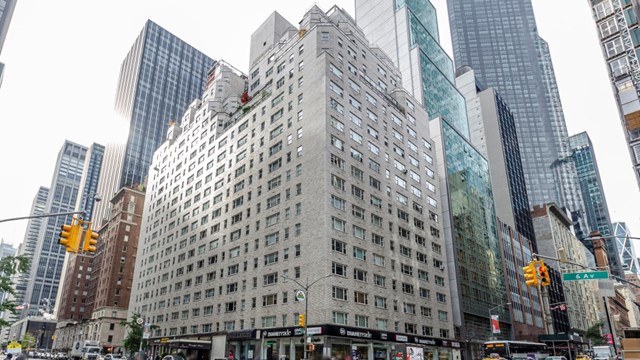When Irwin Cohen, president of Manhattan’s A. Michael Tyler Realty came on board in 1997 to manage a ten-unit co-op on the Upper East Side, the building was on the verge of bankruptcy. In addition to depleting their reserve fund to pay for sorely needed repairs, the co-op owed over $100,000 to various vendors and service providers–$100,000 it couldn’t afford to pay. The co-op had obtained a $100,000 line of credit to do the necessary repairs, but well over half of the sum was long since spent by the time Cohen came on the scene.
To pay the building’s debt, the sponsor refinanced the mortgage for an amount that was "extremely excessive," according to Cohen. "The mortgage was approximately five times what most buildings with underlying debt per unit normally carry." Cohen knew that the road to recovery for this co-op would be a hard one, requiring diligence and hard work from both the co-op’s attorney and its management company.
The turnaround began with a minute examination of the building’s documents and a reassessment of what exactly needed to be done to make it livable. "We found a loophole in the mortgage note that made the mortgage unassignable," says Cohen. Cohen also arranged a walk-through of the premises with a group of appraisers and hired a photographer to take pictures to document the true condition of the property for future reference. Says Cohen, "The walk-through resulted in the appraisal of the property at less than its original value, a lower value than the existing mortgage held on the property. We were able to recast the mortgage, reduce the payments, and exempt the co-op from tax liability."
After adjusting the building’s mortgage, Cohen and his team were able to re-figure the co-op’s budget and operating expenses. Within 15 months, the co-op was on the rebound. Vendors with outstanding invoices agreed to a reasonable pay-out schedule, and several agreed to accept 50 to 60 cents on every dollar owed them in light of the fact that the property had been on the verge of bankruptcy.
"Co-ops can achieve financial stability by creating investment plans" says Cohen. Creative financing and taking the initiative to re-examine a building’s books and documents is just the first step in resuscitating an ailing cooperative.
Birchwood on the Brink
Another testament to hard work and perseverance is Birchwood Glen, a 364-unit, garden style co-op in Holtsville, Suffolk County New York. In 1995, although the Birchwood Glen community had a satisfactory reserve fund, they hadn’t used it–or any other funds–to make any repairs or to maintain the property for nearly a decade.
"There was no real attention given to painting and maintaining the facade," says Dan Weynand, current board president and shareholder since 1988.
Weynand became president of the board in 1995, and hadn’t seen any exterior work done since the time he moved in. Birchwood Glen was looking a little the worse from wear. According to Weynand, the board put away money for capital improvements, but never engaged contractors to begin working.
"They were proud of the fact that they hadn’t had a maintenance increase in the last eight years," says Waynand of the board at the time. By the time the improvements were finally tackled, they realized the existing funds actually fell far short of the numbers needed to finish any serious work, and the building’s crumbling façade and other exterior deterioration wasn’t fixing itself. In 1995, Weynand–in a joint effort with property manager Bill Hoolahan of Century Management Services–decided that the co-op needed to take a different approach to saving and spending. But first, a little research was in order. "I decided to embark on a capital improvement study," says Weynand.
An engineering and architectural firm was hired by the board to take an all-encompassing look at the property and prioritize the repair and refurbishment that needed to be done, Weynand says. From 1996 to 1998, the board used the building’s existing funds to begin some of those improvements, working on the roof, the gutters, and the façade, as well as beginning some interior restoration and painting.
As 1998 approached, the board acknowledged that there were still extensive improvements to make–and that funds were rapidly dwindling. "At this point," says Weynand, "we looked into refinancing our mortgage, but realized that we had a big prepayment penalty."
The co-op turned to National Cooperative Bank (NCB) for assistance. NCB was able to offer Birchwood Glen a $2.5 million line of credit to continue work on their capital improvements. The shareholders agreed to the line of credit, and the long-awaited, much-needed major repair and aesthetic work began in earnest. The money Birchwood obtained went toward repaving the property’s sidewalks and parking lots and re-landscaping the complex’s common areas, adding a small park and a playground. All the co-op’s windows and patio doors were replaced with more energy-efficient versions–at a cost of about $700,000–and Birchwood’s eight boiler rooms were fully upgraded. During these repairs, shareholders’ maintenance fees were increased to offset payments on the loan from NCB.
Although they’d accomplished a lot, the Birchwood board still had some pressing items to address. The board and management knew, for example, that in early 2000, amortization would significantly increase the payments on their line of credit. At the time, the building was just making interest payments on the principal, and it became clear that the bank carrying Birchwood’s underlying mortgage could not make a deal to fit the co-op’s needs.
In 2001, the co-op turned again to NCB. Says Hoolahan, "The bank understood what we were doing. They sent out engineers to survey the property and approved of our improvement plans." Birchwood was able to refinance their mortgage for $7 million, plus the $2.5 million line of credit they had already obtained. "We settled on some very good terms and managed to reduce our annual payments by $200,000 by going with NCB." The refinancing gave the property the wherewithal to continue their capital improvements–which are nearing completion at press time–and to increase their building reserve fund.
To Chapter 11 and Back
When a complex has to enter into litigation with their sponsor and has to declare bankruptcy, the road to financial recovery–if it exists at all–is riddled with uncertainty. Add to the inherent difficulty of long legal proceedings the inevitable effects of a soft real estate market and stagnant unit sales, and the picture is a bleak one. Such was the case of The Doric, a 435-unit co-op in Union City, New Jersey, which boasts views of the Manhattan skyline from the George Washington Bridge to the Verrazano Bridge.
In 1996, a host of problems forced the Doric to declare bankruptcy. The sponsor owned 135 apartments in the complex, many of which were occupied by renters. Many of the renters had stopped paying rent, and the sponsor himself did not pay maintenance at all during the mid-90s. As if that weren’t bad enough, the sponsor had also stopped paying the principal on the Doric’s mortgage. During this difficult period, many shareholders simply walked away from their apartments, leaving their maintenance and mortgage payments unpaid.
With no cash flow, the building had no way to pay for its upkeep. There was almost no money to maintain the property structurally or to provide for sorely needed capital improvement projects. As months of neglect turned to years, the Doric’s façade began to crumble, and the building’s 380-car parking facility was out of commission for almost two years between 1996 and 1998. Several hundred thousand dollars per year in revenue was lost because the garage was simply unusable. Bankruptcy seemed the only way out of a bad situation, but once the Doric filed for Chapter 11, the legal battles began in earnest.
"The board was in constant litigation with the sponsor," says current board president Robert G. Luckie. "It was ineffective."
In 1998, a judge ordered an all-new board be elected. One year later, Luckie became president of the board. As a 30-year resident of The Doric, Luckie had seen the property go through several transitions. As former president of a retail company, Luckie had the financial savvy and leadership skills that the Doric desperately needed.
Following the bankruptcy, the Doric’s board was able to cut an 18-month deal with Credit Suisse First Boston to pay off their first mortgage and provide funds for emergency repairs. As a condition of the bankruptcy, the court allowed for a building assessment, followed by repairs, including renovating balconies, rebuilding the garage, installing fire doors and resurfacing the pointing–a single project that called for the replacement of 30,000 bricks. As the construction continued through its various phases, Luckie–with the help of the Doric’s management team–held weekly meetings to monitor the progress of the work being done and to make sure that it stayed within the budget limits.
As the end of the 18-month term approached, The Doric’s board began to plan their next move. Credit Suisse was not necessarily in the business of offering long-term financing to co-ops, and the work the building had embarked on wasn’t nearly finished. The board also knew that the building’s low occupancy rate would not count in their favor when looking for new loan money, so they turned to NCB for financing. The bank arranged a custom package in which NCB paid off the Credit Suisse note, refinanced the Doric’s existing mortgage, and provided funds for capital improvements and individual unit financing. All of the Doric’s capital improvements–which amounted to about six million dollars–were completed in June of 2001.
"This is the first time in six years that we haven’t had scaffolding up," says Luckie.
In addition to fixing what was broken, the Doric has also created a new private garden and re-opened the property’s pool to residents for the first time in five years. In the six or so years prior to February 1999, says Luckie, the complex hadn’t had a single apartment sale, but since the overhaul, sales have been brisk and purchase prices have been steadily increasing. The price for a one-bedroom has almost doubled, and the building is in excellent shape physically and financially. In 2001, Luckie says the Doric has sold more than 50 apartments.
What it Takes to Come Back
"Co-op boards should develop capital improvement plans that call for repairs and maintenance every five to ten years, utilizing special assessments and outside financing when necessary," according to Mitchell Barry, chief executive officer of Century Management Services in Lake Success, New York. "Management and boards need to make a plan and move forward with it." Barry maintains that by keeping the property in top shape, shareholders are protecting their investment and ensuring that they won’t be hit with complete overhauls, which can be enormously expensive when carried out under the gun, as it were. "You have to put money back into your neighborhood to keep its value up," he says.
Weynand agrees. "Our co-op prided itself on one maintenance increase in nine years. Saving is important but it is also crucial to keep up the property before things deteriorate." The rewards are well worth the expense. In 1995, a two-bedroom garden apartment in Weynand’s building sold for between $38,000 and $42,000. This year, that same apartment has been sold for $100,000. "Birchwood Glen is a very sought after property," says Weynand. "We had one apartment go on the market one day and sell the next."
Better Days Ahead
In the end, it is the dedication of the board of directors and management that ultimately keep a property on track financially. Says Hoolahan of Weynand, "He’s what we’d like to have as a board president. He’s receptive to new ideas and was open-minded enough to see the big picture." When asked what would have happened to Birchwood Glen–and other buildings with similar problems–had the board not stepped in to take control of the property and do what had to be done, Hoolahan replies, "It would’ve become a ghost town."
Thanks to the united efforts of concerned board members, dedicated managing agents, and banks willing to work with these co-ops to get them back on their feet, what might have been three stories of slow decline and financial disaster can stand as models of success. No amount of damage control after the fact can equal a sound financial and maintenance game plan, of course, but even if your building seems beyond help, it pays to explore your options, talk to as many experts as you can, and not be afraid to try something different. When it seems you have nothing to lose, it’s often the least orthodox, most daunting plan of action that brings you–and your building–back from the brink.
Ms. Terrell-Ernest is a freelance writer living in Queens.







Comments
Leave a Comment